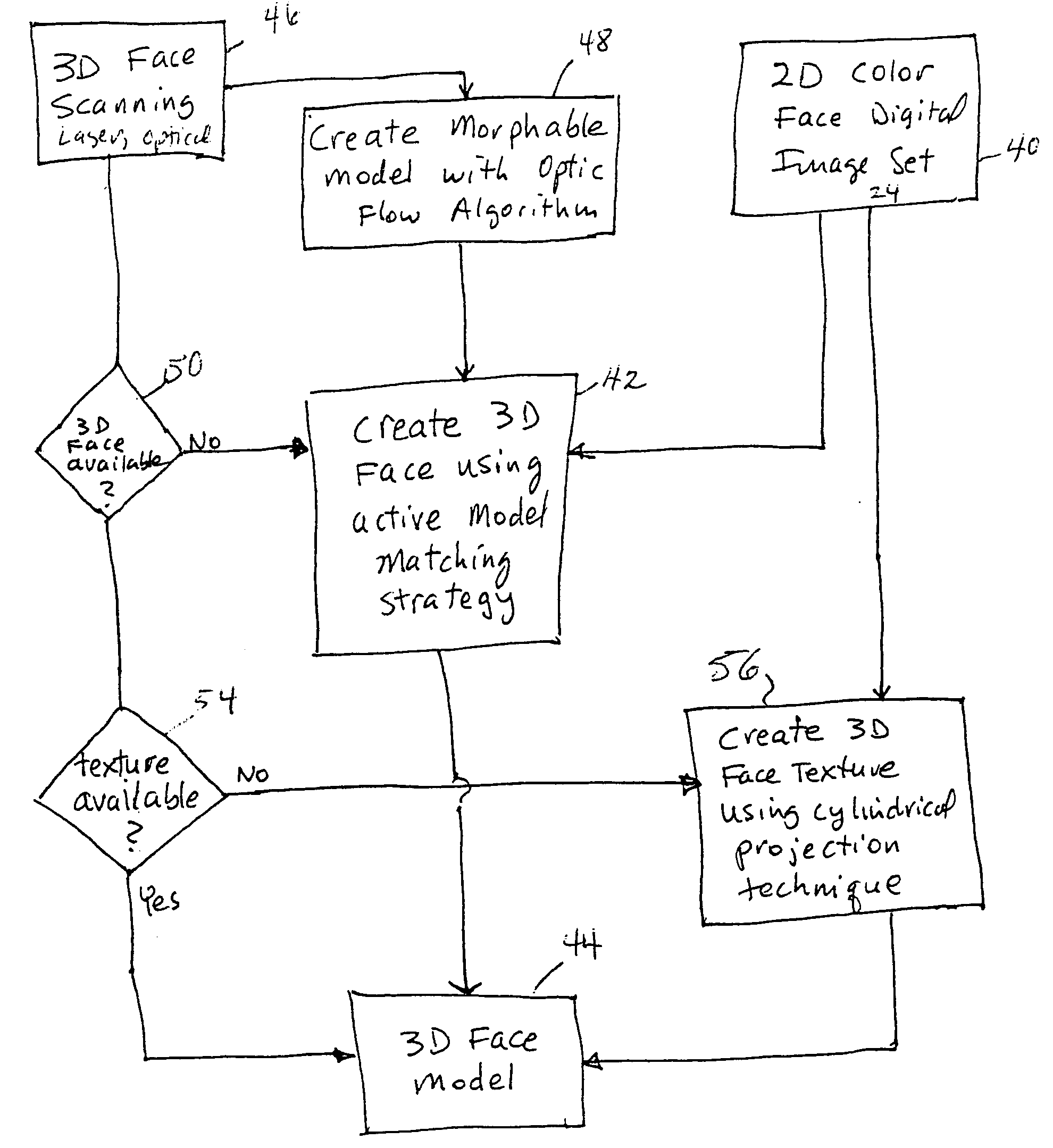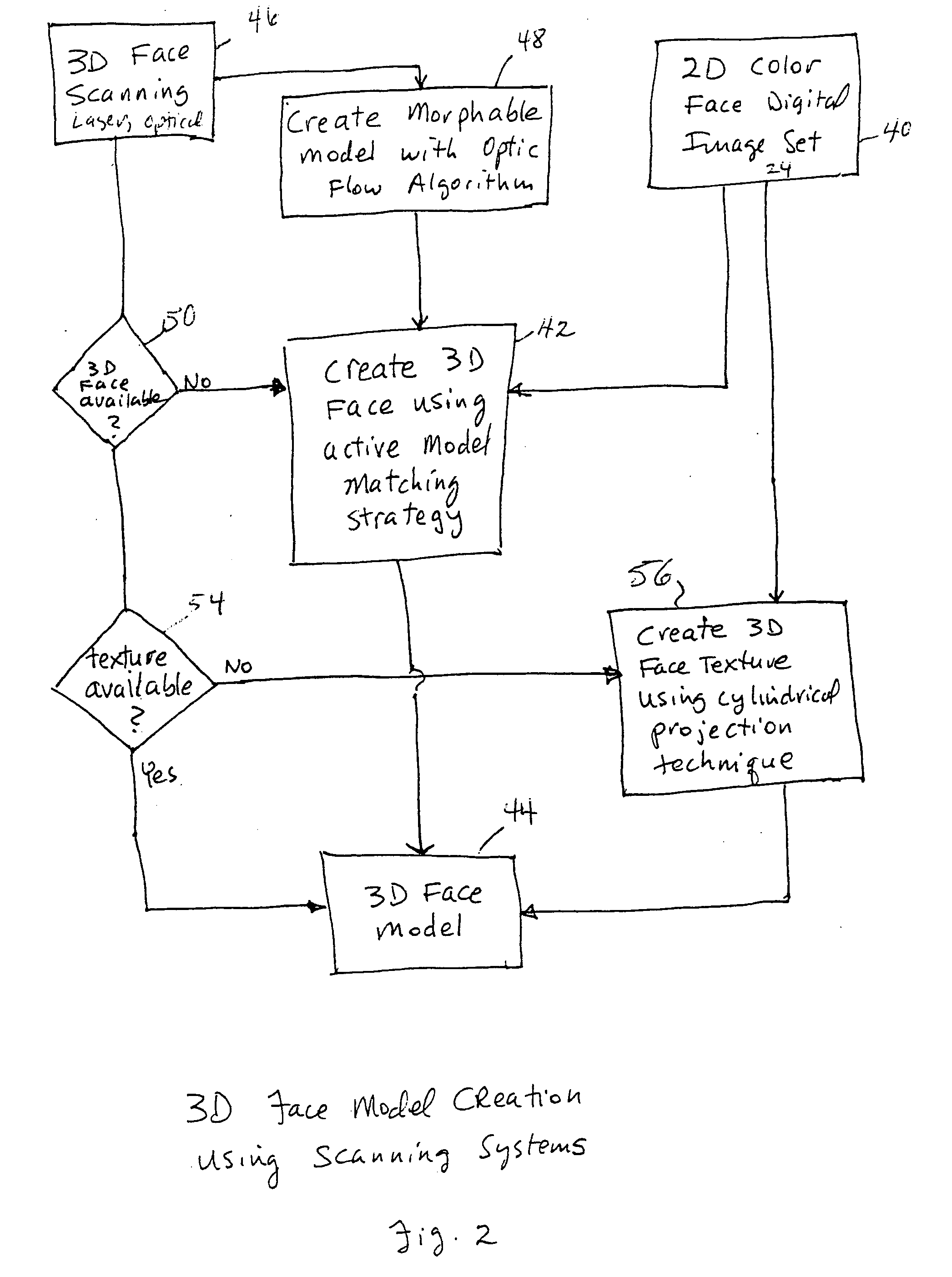Unified workstation for virtual craniofacial diagnosis, treatment planning and therapeutics
a virtual craniofacial and workstation technology, applied in the field of computerized techniques for diagnosing and planning medical and dental treatment of human patients, can solve the problems of time-consuming and labor-intensive, no guarantee of the good results of treatment, and unscientific process, so as to achieve the best position of teeth, create multiple morphed models, and analyze quickly
- Summary
- Abstract
- Description
- Claims
- Application Information
AI Technical Summary
Benefits of technology
Problems solved by technology
Method used
Image
Examples
Embodiment Construction
[0049] General Description
[0050] A unified workstation environment and computer system for diagnosis, treatment planning and delivery of therapeutics, especially adapted for treatment of craniofacial structures, is described below. In one possible example, the system is particularly useful in diagnosis and planning treatment of an orthodontic patient. Persons skilled in the art will understand that the invention, in its broader aspects, is applicable to other craniofacial disorders or conditions.
[0051] A presently preferred embodiment is depicted in FIG. 1. The overall system 100 includes a general-purpose computer system 10 having a processor (CPU 12) and a user interface 14, including screen display 16, mouse 18 and keyboard 20. The system is useful for planning orthodontic treatment for a patient 34. In another example, the system is particularly useful in planning therapeutics and designing customized appliances for the patient. In still another example, the system is particul...
PUM
 Login to View More
Login to View More Abstract
Description
Claims
Application Information
 Login to View More
Login to View More - R&D
- Intellectual Property
- Life Sciences
- Materials
- Tech Scout
- Unparalleled Data Quality
- Higher Quality Content
- 60% Fewer Hallucinations
Browse by: Latest US Patents, China's latest patents, Technical Efficacy Thesaurus, Application Domain, Technology Topic, Popular Technical Reports.
© 2025 PatSnap. All rights reserved.Legal|Privacy policy|Modern Slavery Act Transparency Statement|Sitemap|About US| Contact US: help@patsnap.com



